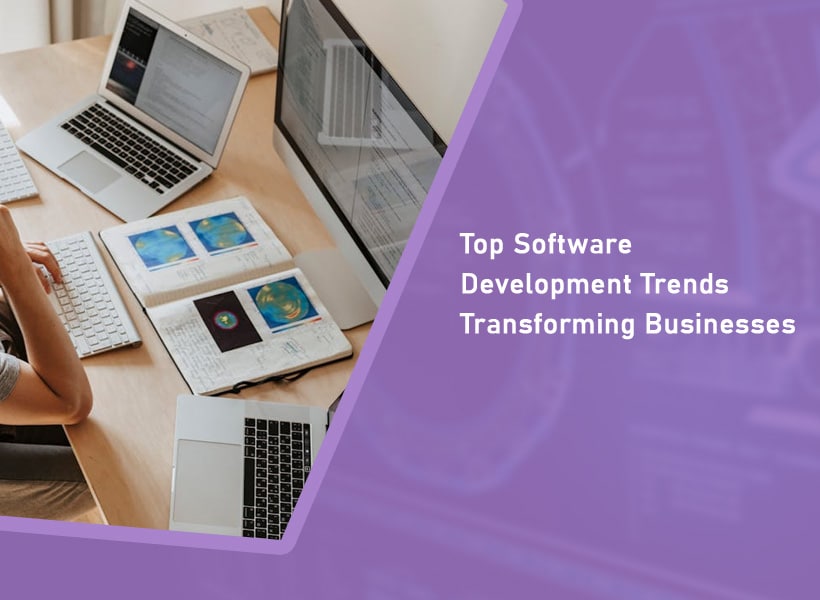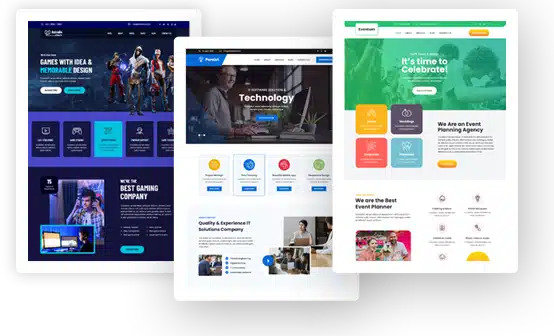Top Software Development Trends Transforming Businesses in 2025

The way we build software is changing…fast!
Things that once took weeks or months can now be done in seconds. For businesses, that means one thing: “keep up, or get left behind”. And with the global software development market expected to hit $1.04 trillion by 2030, it’s clear that software isn’t just part of the business world, it is the business world.
This isn’t about minor upgrades. We’re talking about new ways of creating software that can make companies faster, more secure, and more successful than ever.
Current Trends in Software Platforms
In this blog, we’ll walk you through the biggest changes transforming the industry, straight from the experts at Brain Station 23, a leading software firm in the USA. From AI tools that can write code for you, to cutting-edge security methods, these trends could shape your next big business decision.
Let’s get started:
1. Development Revolution Powered by AI
Writing, reviewing, and optimizing code AI tools have become a staple of everyday developer life. Generative AI is transforming the future: more than 95 per cent of executives consider that generative AI will radically change how businesses will develop and sustain software.
Such tools like Copilot and Claude Code provide suggestions on code, automate bug-detecting, and speed up workflows. The tools do not replace developers but rather allow teams to concentrate on addressing actual business issues as AI can take care of routine, repetitive work.
In 2025 almost 50 percent of all AI applications will target IT automation.
2. The Low-Code and No-Code Platforms Develop Rapidly
Low-code and no-code platforms have become popular because of the pressure to develop apps more quickly and less expensively. Almost 80 percent of companies regard low-code as strategically relevant to accelerating projects and enhancing IT efficiency (Hostinger). Low-code will be used in 75% of the new apps by 2026. That is, IT and business teams are able to collaborate more rapidly, and citizen developers can create workflow apps without intensive coding.
Low-code is not a fad. Visual tools are used by real businesses to design products and processes. In the case of software development firms such as ours, this will solve the talent crunch and also help accelerate project delivery to clients with time-bound requirements.
Vibe coding is gaining prominence every day and this makes us realize how fast coding is evolving to the whole world. Even the Nvidia CEO Jensen Huang and Elon Musk urge students to learn physics rather than programming during the AI age.
3. The Hybrid Future: Progressive Web Apps
Progressive Web Apps (PWAs) are a combination of native mobile and web technologies. Other companies such as Starbucks and Twitter have demonstrated that PWAs can increase engagement and be accessed across all devices without the need to download an app store app. With the large-scale penetration of smartphones and the need to provide smooth online experiences, the global PWA market is projected to achieve the value of up to 9.4 billion by 2030.
4. Cloud & Multicloud Strategies
The cloud has been used widely due to remote and hybrid work. Nowadays, 92 percent of businesses employ a multicloud strategy, combining a public and a private platform and achieving greater security and compliance (Hostinger). The development of cloud-native applications and microservices architecture allows software to be more agile and scalable, which means that businesses can expand without being limited by older systems.
Cloud-first development is not an option anymore but a default choice of any software development company in the United States of America that wants future-proof solutions to clients.
5. Zero Trust and DevSecOps Modern Security
Security is no longer an afterthought to the development of modern software. In fact, 76 per cent of organizations have begun to employ Zero Trust security, and AI-enabled tools facilitate the implementation of policies, scans and the ability to meet stricter compliance requirements (Hostinger). DevSecOps incorporates security throughout the development lifecycle, which enables developers to find and fix threats as soon as possible.
Leading software companies prioritize secure coding and ongoing security integrations characteristics that distinguish the best software development firms.
6. Rust and microservices
Microservices architectures are more preferred by businesses because of speed, scalability, and resilience. In microservices, individual modules can be developed, managed and updated separately saving a vast amount of time and money when problems are encountered. Containers such as Docker assist teams in deploying components anywhere, automate rollouts and scale as required.
Rust has become a favorite language of developers because of its speed, security, and memory safety. Rust is used by many industry leaders and software development companies on performance-sensitive projects.
7. IoT, Blockchain, and Automation
The field of IoT keeps growing as it is projected that there will be 19.8 billion IoT devices in 2025, revolutionizing such industries as healthcare and manufacturing. (Source: https ://teltonika-networks. com/newsroom/top-iot-security-risks-in-2025-and-how-to-defend-against-them) With enhanced security and traceability, blockchain is no longer all about cryptocurrencies; 73 percent of executives believe that it will achieve competitive advantage.
Automation and agentic AI will result in millions of new jobs in the management of intelligent systems. Businesses that tap into the emerging automated technologies will remain at the top of the game as they can cover the gaps created by the current shortage of IT talent.
8. Globalisation and Outsourcing
The global shortage of skill is a major reason why many organizations are engaging in IT outsourcing in order to get access to skills worldwide. Flexible partnerships and remote working enable organizations to develop, expand, and meet shifting needs on a scale, but not be affected by a lack of geographical or staffing options.
Before selecting a leading software company in the usa, you should consider the risks and rewards accordingly.
The emerging trend in software development: Autonomous AI-powered platforms
Consider a program that can correct and enhance itself with little or no human supervision. Sounds like science fiction? This is soon becoming a reality in 2025 with the advent of autonomous AI-driven platforms, the next big thing in software development.
What Do Autonomous AI-Driven Platforms Do?
These are intelligent software programs that are driven by sophisticated artificial intelligence (AI) and are able to do far more than running programs. They can:
- Write and modify their own code: AI assistants can automatically write, optimize, and modify code according to the needs of the business at any given time.
- Solve problems themselves: When problems are identified by the software, they can often be resolved before anyone is even aware there is a problem.
- Deploy and manage themselves: No more sitting around waiting on deployment time; they update, scale and secure themselves.
- Fine tune experiences: Knowing how users are interacting with the software, the platform can adapt itself to deliver a more personalized and familiar experience.
- Support various data types: These platforms can integrate any type of data whether voice, images, sensor data, or text inputs to make applications smarter.
Why does it affect businesses?
This new generation software offers great advantages to organizations, making them faster than ever before since changes and features updates can be made faster and easier with the help of AI in development and self-learning platforms.
It saves money by avoiding the expense of manual coding and continual maintenance, which would take up a lot of precious time and effort. Also, the software is constantly up-to-date, and it is secure, reliable, and compliant with minimum human supervision.
The result of this is an improved level of user satisfaction since individuals are more engaged and satisfied with the personalized digital experience.
Conclusion
The world of software development in 2025 is characterized by speed, safety and intelligent automation. The most forward-thinking companies are now cooperating with the most successful software development firms in the United States of America, aligning to utilize these innovations and future-proof growth in an age of eternal change.
When you are finally willing to change the way you do business, seek a software development firm that will deliver experience, creativity, and an emphasis on quantitative business outcomes.

